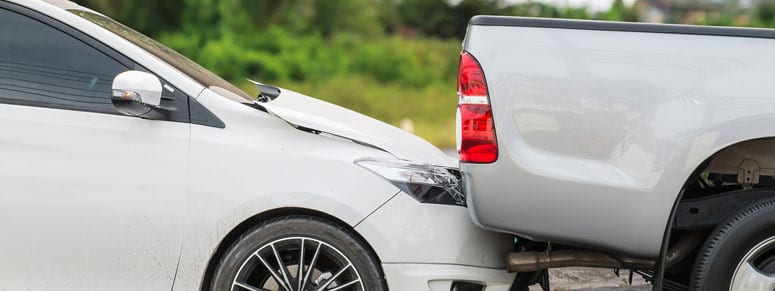
Minnesota Rear-End Collision Injuries
Of the 6 million car accidents that take place nationwide every year, almost half, 2.5 million, are rear-end collisions, according to the U.S. Department of Transportation[1] Federal Highway Administration. These accidents are caused by a number of circumstances, but the majority are the result of a sudden obstruction in the path of a moving vehicle to which the driver is unable to respond fast enough.
Accidents and road construction often pose the most common conditions. When an accident happens suddenly in traffic ahead, the sudden stop across the roadway can lead to unexpected traffic conditions. Just the same, construction personnel and equipment can also enter the roadway, posing a risk to unaware drivers.
This brings up another circumstance in which accidents may occur; drivers who aren’t paying attention. Texting and driving, eating, loud music, or distracting passengers can prevent a driver from noticing traffic in their lane.
Drinking and driving is another common cause of rear-end accidents. Intoxicated drivers are prone to impaired judgement and slowed reflexes, as well as falling asleep at the wheel.
Road defects and weather conditions create environmental circumstances that can catch drivers off guard. Potholes, or trees and bushes obscuring oncoming traffic, as well as heavy rain, ice, or fog are all dangerous and account for many rear-end collisions.
Rear-End Collision Injuries
There are many types of injuries that a person can potential sustain in the event of a rear-end collision. The most common is whiplash, accounting for nearly 20 percent of all rear-end accident injuries, according to the National Safety Council.
Whiplash [2] is the name given to an injury which is the result of the sudden stopping motion of a vehicle. The momentum of the body can cause the head to whip forward or backward in a whipping motion, hyperextending or hyperflexing the neck, back, and shoulders.
 Back injuries are common in rear-end accidents when the spine is compressed. Complications from back injuries often last for weeks, months, and even years.
Back injuries are common in rear-end accidents when the spine is compressed. Complications from back injuries often last for weeks, months, and even years.
If a Minnesota driver or passenger is involved in a rear-end crash, they may sustain any number of different type of injuries.
At speeds of less than 20 miles per hour, airbags will not typically deploy. As a result, the driver and passengers of a vehicle can be thrown into the steering wheel, windshield, or dashboard. When this happens, they can sustain head trauma, as well as fractures of the facial bones, such as the cheek bone or nose.
Another result of the sudden stopping force of a rear-end collision may be injuries to the extremities. Fingers, hands, wrists, and arms can be impacted on the steering wheel. Often, passengers will attempt to shield themselves by putting their arms up, which will cause them to absorb impacts with objects and surfaces in the car.
Contact a Minnesota Rear-End Collision Attorney




